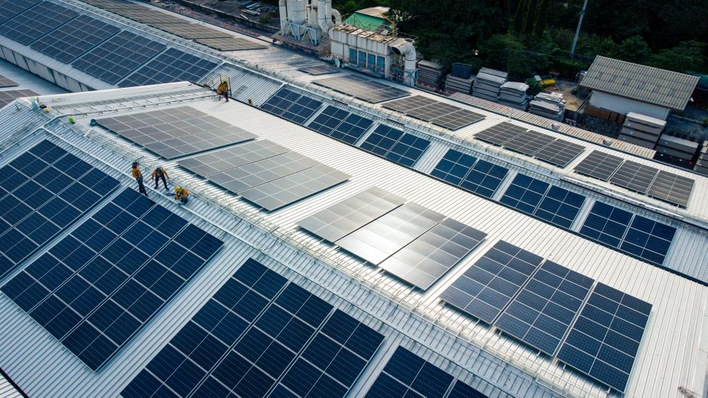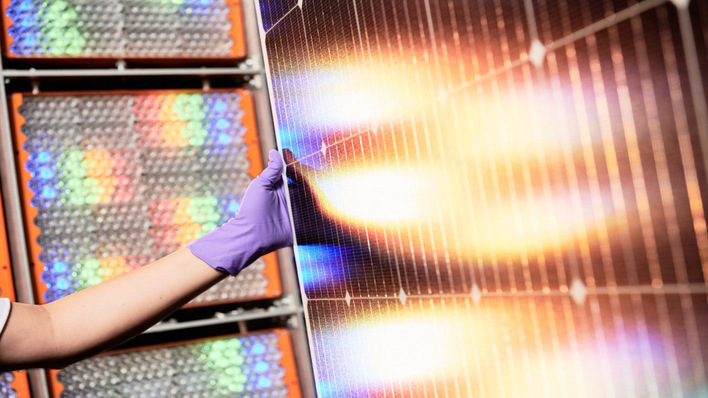To be correct, the source material of crystalline solar cells is quartz sand (silicon oxide). This is reconditioned, melted, cast into ingots and cut into slices (wafers). From these the silicon cells are then made at a thickness of 100 to 180 micrometres. As you probably know: They convert light to electricity.
Blue sheen poly, mono comes in black
The crystals in polycrystalline cells have an irregular structure and a blue sheen. Monocrystalline cells are black and consist of one single crystal. They allow for a better electricity yield but are more expensive to produce.
For protection, the solar cells are imbedded in plastic foil, covered in safety glass and framed in aluminium. Some panels have a pane of glass on either side (double-glass panels), however, most have a solid sheet of plastic at the back. The rear of the panel also includes a connector with clamps.
Cells in pinstripe suit
Polycrystalline solar cells currently achieve efficiency of up to 20 percent, 18 percent as part of a panel. Monocrystalline cells now allow yields of up to 23 percent, monocrystalline panels achieve up to 19 percent efficiency. Most of the cells have some busbars on their front side to collect the electrons. High yield cells contain four or five busbars. Some suppliers offer cells without busbars on the front. They bare a pattern of slight metallic strips almost invisible with your eyes – like a pinstripe suit.
Ventilation is important
However, ventilation is important to avoid great losses in output due to overheating from too much sunlight. At the moment polycrystalline panels for rooftop installations produce up to 285 watts, decent monocrystalline panels over 300 watts. (HCN/HS)
Look at this:
Solar advice: Leave installing and maintenance to the experts!
Stay informed, get our newsletter twice a week: Register here.
Solar modules: keep up with the latest product news!
Find useful products for solar energy storage here.
Find useful products for e-mobility here.







